
I hope you all had a Merry Christmas!

I hope you all had a Merry Christmas!
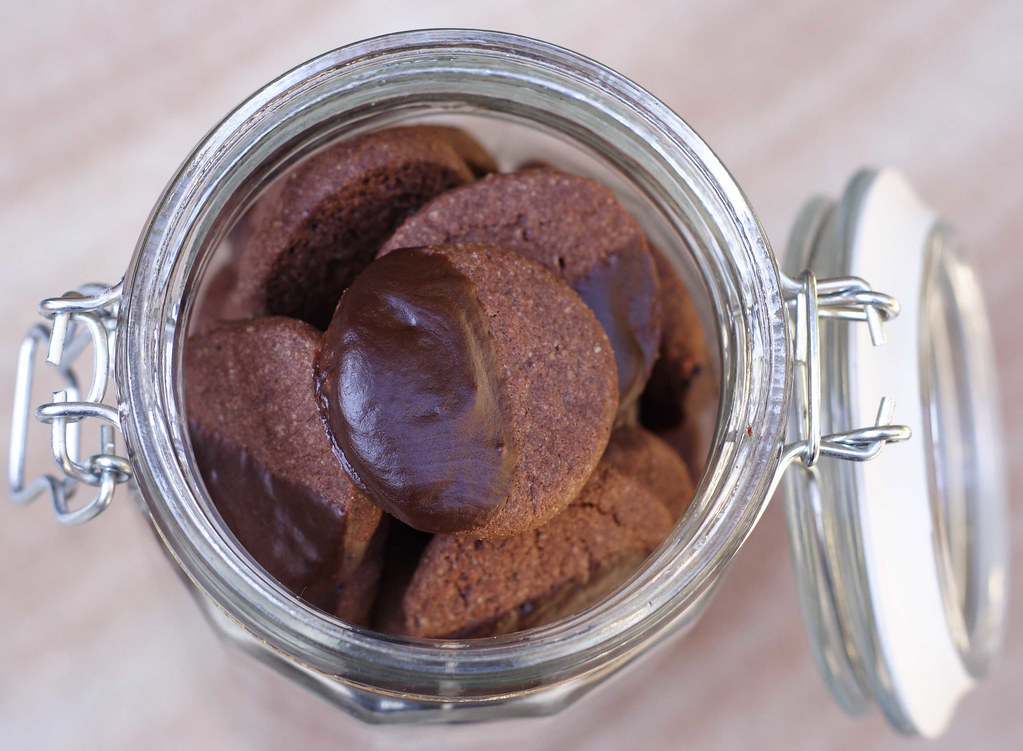 This year, I did do my share of baking for the upcoming holiday season: That's the second batch of my Christmas Cookies. I made the Chocolate Taler after my boyfriend had given me a not-so-subtle hint that he wouldn't mind an all-chocolate cookie... I haven't tried the recipe before and was very pleased with the result: chocolatey but not overly sweet, substantial but not too heavy for happily devouring one after another. Straight from the oven, they are pretty crunchy but get chewy after a few days. The original recipe didn't call for the dunking in rich chocolate ganache but we did not regret this little tweaking.
This year, I did do my share of baking for the upcoming holiday season: That's the second batch of my Christmas Cookies. I made the Chocolate Taler after my boyfriend had given me a not-so-subtle hint that he wouldn't mind an all-chocolate cookie... I haven't tried the recipe before and was very pleased with the result: chocolatey but not overly sweet, substantial but not too heavy for happily devouring one after another. Straight from the oven, they are pretty crunchy but get chewy after a few days. The original recipe didn't call for the dunking in rich chocolate ganache but we did not regret this little tweaking.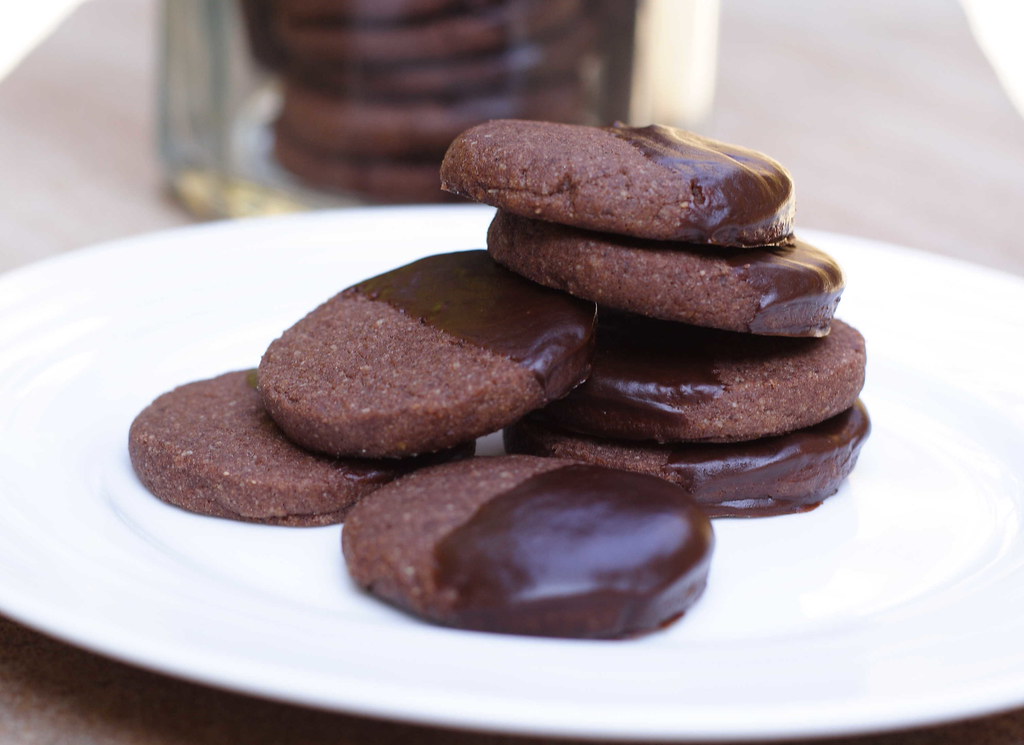
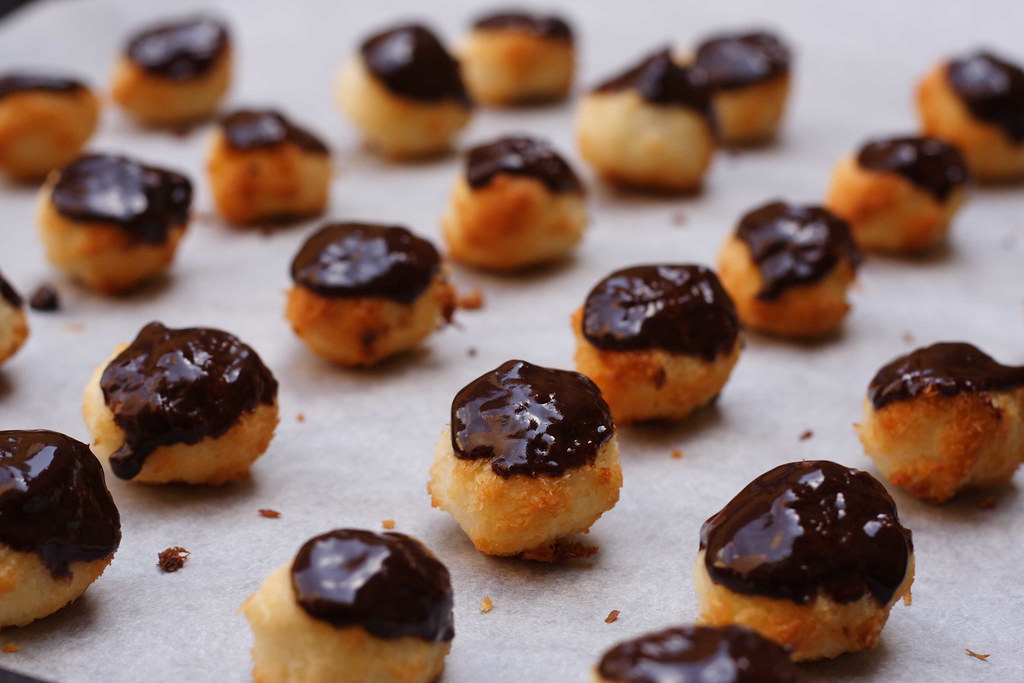
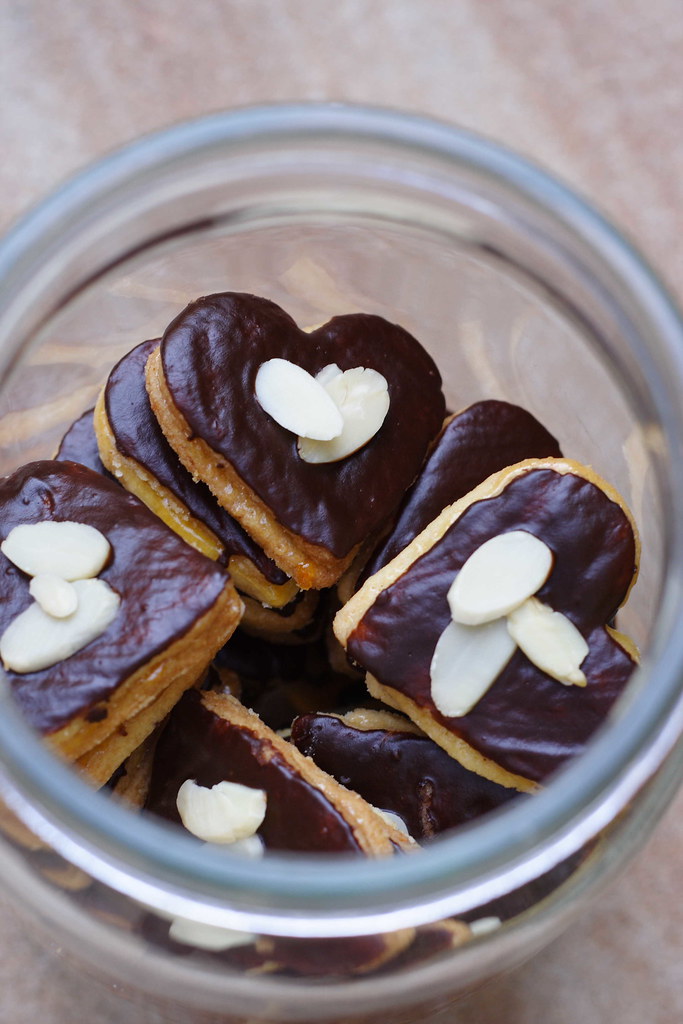
After numerating this sad litany, I decided to cheer myself up a bit before getting another fit of severe self-pity. And what’s better than doing some baking? Unfortunately, it can’t get any of my beloved ones closer to me but there is some consolation in the fact that they will be eating just the same cookies.
“Vanillekipferl” (Vanilla Crescents)
This recipe is a real classic. Its sweet vanilla scent is absolutely irresistible and the crunchy-crumbly feeling when biting into one of those – words can’t describe this… Another big advantage of this recipe is its versatility. The dough is pretty similar to the one of “Ischler Toertchen” (tartlets of Ischl, a town in
The ingredients
300 g flour
125 g sugar
1 sachet vanilla sugar (about a heaped tablespoon)
150 g ground almonds
250 g butter, cold, diced
3 egg yolks
Icing sugar, mixed with vanilla sugar
1
Sift flour onto your work surface, mix with sugar, vanilla sugar, and almonds.
2
Rub butter into the mixture, mix in egg yolks. Trying to work as fast as possible, knead until there are no butter lumps left. Chill the dough for at least 30 minutes (or put it into the freezer if you are in a hurry).
3
Form dough into two thin rolls (At this stage, you can save half of the dough for another purpose.). Try to get even strands but don’t roll the dough too long as it will fall apart. Cut dough strands into small pieces and form each into a small crescent. The middle part should be thicker than the ends.
4
Place crescents on a baking sheet lined with parchment paper. Make sure not to put them too close to each other as they will rise during the baking process. Fan bake at 150 degrees Celsius until light golden, approximately for ten to twelve minutes.
5
While still hot turn the crescents in a mixture of icing sugar and vanilla sugar until evenly coated. Handle with care, at this stage they can break easily.
The source
Hedwig Maria Stuber: Ich helf Dir kochen
“Ischler Toertchen” (Tartlets from Ischl)
As said before, you can easily use the dough from the vanilla crescents to save some time. However, the nutty almond flavour won’t be very strong because store-bought almond flour is usually made of peeled almonds. The original recipe calls for unpeeled almonds to be ground and that makes quite a difference.
The ingredients
140 g butter
140 g flour
70 g sugar
70 g unpeeled, ground almonds
Pinch of salt
Apricot jam
Chocolate glaze
Flaked almonds or peeled almond halves
1
Rub butter into mixture of dry ingredients. Working as fast as possible, knead until dough gets a smooth and even consistency. Chill for at least half an hour.
2
Roll out the dough using as little extra flour as possible. Cut out cookies using a flower shaped cookie cutter (I didn't have one so I used a heart-shaped one). Place on a baking sheet lined with parchment paper and fan bake at 150 degrees Celsius until light golden.
3
Let cool and sandwich together with apricot jam. To get a spreadable apricot jam, heat the jam with a little water, stirring constantly. You can strain the jam to get rid of fruit pieces but this is optional.
4
Spread chocolate glaze on top of the sandwiched cookies and decorate with almonds halves or flaked almonds.
The hints
If you can’t get store-bought almond flour made of unpeeled almonds and don’t own a food processor, you could substitute half of the almonds with ground hazelnuts.
This is the Christmas version of “Ischler Toertchen”. The original calls for a chocolate butter cream to sandwich in between.
In case you want more cookies and fewer calories when eating one: Forget the sandwiching and just glaze single ones with chocolate.
And, of course, if you opt for the original recipe, you could turn this dough into vanilla crescents as well.

When I opened the fridge this time, there were several veggies looking rather scornfully at me from the bottom shelf: Two forgotten corn cobs, some very ripe tomatoes, a bunch of asparagus – slightly wrinkly at the end – and several opened and just half used cans.
After considering possible combinations, I decided to blanch some of the veggies first, then top it with tomato-based sauce béchamel and some feta cheese (also better used before it’s too late) and pop it into the oven for a couple of minutes. The result was tasty and colourful, and it didn’t look like a makeshift solution. The veggies had a good crunch and were held together nicely by the velvety béchamel sauce. With its deep orange colour it had an entirely new twist. And for someone who likes feta cheese as much as I do, the salty white chunks on top were almost the best part.
Spring Vegetables with béchamel sauce and feta topping
The ingredients
10-15 stalks of green asparagus (one and a half bunch)
2 corn cobs
4 roma tomatoes
1 tablespoon butter
2 tablespoons flour
1-2 tablespoons tomato paste
Splash of milk
100 ml evaporated milk
2 ladleful of veggie cooking water
Salt and freshly cracked pepper
100-150 g feta cheese
Serves 2-3 people.
1
Wash and trim asparagus. Blanch the whole stalks in salted water for a couple of minutes depending on how crunchy you like your asparagus. With a sharp knife, scrape the corn kernels into the boiling water and let cook for another two minutes. (I don’t know if that’s the proper method to separate the kernels from the stem but that’s how I did it.)
2
Using a slotted spoon, transfer the veggies into a greased ovenproof dish and set aside. Don’t discard the water.
3
For the béchamel sauce, let the butter melt over medium heat, stir in flour and let roast until golden yellow. Add the tomato paste and roast a little longer. Using a wire whisk, stir in the cold milk and cold evaporated milk. Stir until there are no lumps left and let cook until the mixture thickens.
4
To get your desired consistency, add some of the water you used for blanching the veggies. I used two big ladleful. Season to taste with salt and freshly cracked pepper.
5
Spoon your tomato béchamel sauce over the veggies. Top with sliced tomatoes and diced feta cheese. Pop into the oven at 150 degrees Celsius until everything is just heated through. This should only take a couple of minutes as the feta cheese doesn’t melt anyway.
Serve with freshly cracked pepper and some fresh crusty sourdough bread. In case you have a hungry meat lover to feed, serve it alongside a steak or a grilled gourmet sausage.
The source
My own creation
The hint
You will probably end up with too much béchamel sauce. Using the veggie cooking water it will make the base for a nice soup the other day.
 I’m a little bit late but it's never too late to do a good thing: Whoever out there is paying attention to my food blog right now should also pay some attention to this year's MENU FOR HOPE.
I’m a little bit late but it's never too late to do a good thing: Whoever out there is paying attention to my food blog right now should also pay some attention to this year's MENU FOR HOPE.US West Coast: Becks and Posh
US East Coast: The Amateur Gourmet
US (the rest): Kalyn's Kitchen
Canada: Cardamom Addict
Europe and UK: Davidlebovitz.com
Asia Pacific/Australia/New Zealand: Grab Your Fork
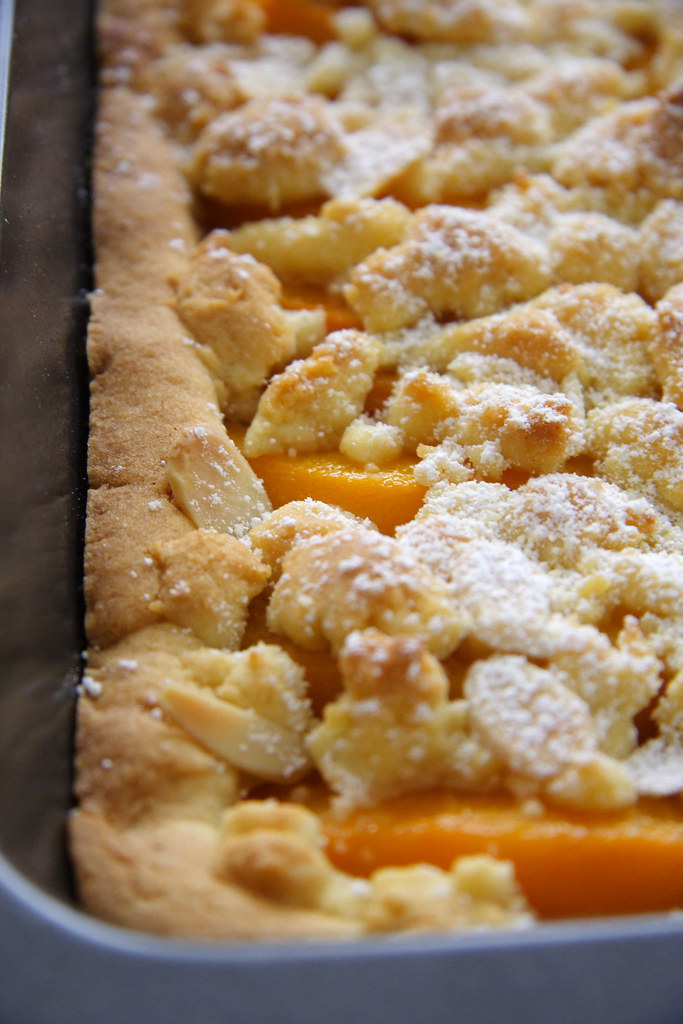
Once upon a time, there was a really plain looking cake. Sitting flatly in its baking sheet, it always adored those piled-up high layer-cakes coated in whipped cream or butter cream and garnished with all sorts of dainty things. The humble cake never expected to be appreciated like those masterpieces of pastry. It knew too well that most people tend to overlook it at first. However, this honest cake would never attempt to conceal any kind of culinary failure behind a cream cloud – hoping that no one would dare to cut into this lofty creation.
German streusel cake - that’s the incarnation of home-made goodness. It wants to impress you with quality not with its looks: On a bed of shortcrust pastry you’ll find pieces of peaches covered with sweet and crunchy streusel and a handful of flaked almonds. A light shower of powdered sugar fits this cake quite nicely. If you feel dainty, just dress it up with some vanilla-scented whipped cream. After that, this cake will look almost as elegant as its lofty relatives – but unlike them, its taste will never disappoint you.
German Streusel Cake
The ingredients
300g butter, softened
250g caster sugar
2 small eggs (or 1 whole egg and an egg yolk or egg white)
Salt
600 g all-purpose flour
3 teaspoons baking powder
1 big can of peaches
Handful of slivered almonds
Icing sugar for sprinkling
1
Cream the butter together with the sugar. Add eggs, one at a time. Beat thoroughly until pale and fluffy.
2
Mix dry ingredients. Pour half of the dry ingredients on top of the creamed butter, beat until incorporated. Mix in the rest of the dry ingredients using your hand while producing little crumbles.
3
Press a good half of the crumbling dough into a lightly buttered baking sheet. Top with peach slices.
4
Crumble dough pieces on top until almost all of the peaches are covered. I like my crumble topping very crunchy and sweet so I added a bit more sugar at this stage.
The source
The German cookbook “Hedwig Maria Stuber: Ich helf Dir kochen”
The hints
Depending on the size of your baking sheet, you’ll probably end up with too much dough. It freezes very well and can be used either as shortcrust pastry or crumble topping.
For really crunchy crumbles, caster sugar is a bit too fine. Whilst the coarse sugar available in
This cake works equally well with apples, rhubarb or sour cherries. If your fruits are very juicy, you should cover the dough with bread crumbs first.
A quarter of the flour could also be substituted with almond flour.

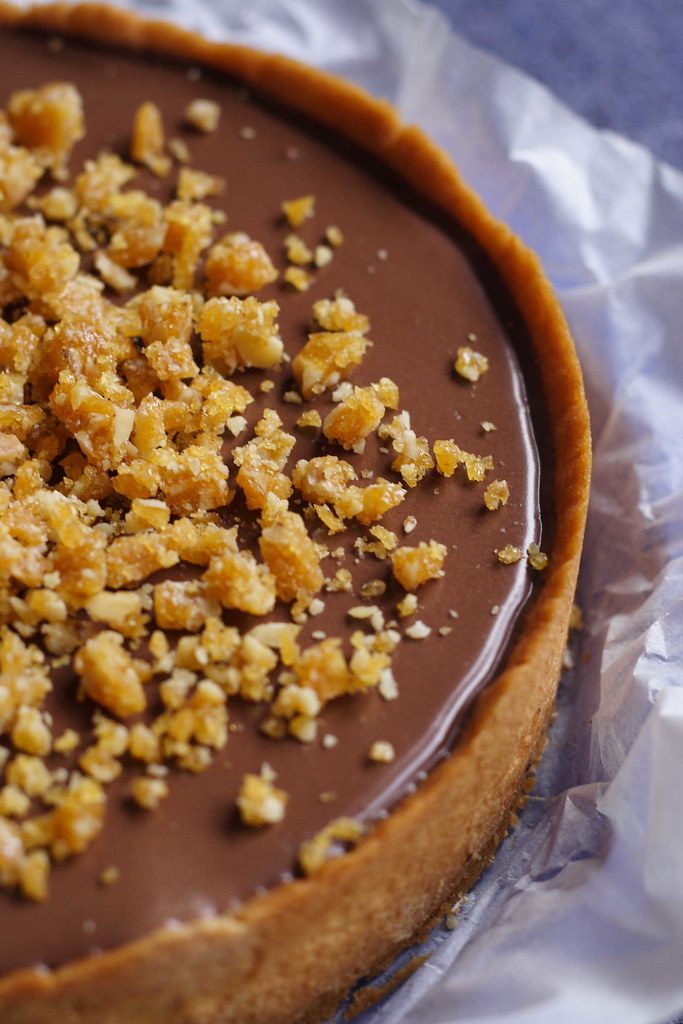
To cater for a crowd of hungry engineers, I usually make a small round cake and a baking tray. The small one always has to be a chocolate cake – all guys are just the same when it comes to sweet things. A chocolate sponge filled and frosted with chocolate ganache and raspberry jam proved to be a real crowd pleaser. However, having already made the whole lot once this week, I decided to try something different. Additionally, the order came on short notice and I didn’t feel like going to the supermarket twice a day. Therefore, a quick look into the fridge: I always have a little supply of chocolate so the key ingredient was not a problem. However, there was almost no cream left and only a little cream cheese. Instead, a big tub of low-fat sour cream sat on the shelf. I’m not extremely fond of American cheese cake but don’t they throw sour cream into it? How would this pair with chocolate? Too sour or just a nice counterpart to cut down the sweetness? Partly out of curiosity and partly out of mere necessity, I decided to give it a shot.
Fortunately, I had some leftover shortcrust pastry in the freezer which just has to thaw. In the meantime, I start with the filling by melting 150g of chocolate. I add cream, cream cheese, and sour cream – and the stuff tastes far too acidic. What to do? After all, I don’t want to disappoint the guys. Frantically, I stir in four tablespoons of cocoa – still not chocolatey enough. Okay, more chocolate has to be melted. It’s getting better but still not sweet enough. Some icing sugar is stirred in, followed by some rum essence to lift it up a bit. And step by step, I start to feel like having created something really good! To balance the taste a little bit, I add a small egg yolk and notice that I really like it by now. However, I'm still a bit insecure. Would it get firm enough for slicing? Would it match the pastry base? Would the engineers like it?
I pour the filling into the tart shell. The smooth and shiny surface of my experimental tart looks already good to me but I want to dress it up with some walnut caramel. Those dark golden bits have a stunning look and add a much welcomed crunch.
The next day, the engineers clean their plates even faster than usual.
The ingredients
Pastry base
A fully baked tart shell, 20 centimeters in diameter.
(I used a recipe from the bible for German down to earth food - Hedwig Maria Stuber: Ich helf Dir kochen)
Chocolate filling
250 g dark chocolate
300g sour cream, light
1 ½ tablespoons cream cheese
4 tablespoons thickened cream
4 tablespoons cocoa
4 tablespoons icing sugar
½ bottle of rum essence
1 egg yolk
Topping
A handful of walnut halves, chopped
4 tablespoons sugar
1
Break chocolate into pieces; melt over a bowl with hot water. Thoroughly stir cream cheese into the warm chocolate using a wire whisk.
2
Add cream and sour cream; add cocoa and icing sugar, stirring vigorously.
3
Add half of the bottle of rum essence, maybe ten drops. You could use real rum but I reckon the mixture would get too runny. Stir in egg yolk.
4
When the mixture has cooled completely, pour into tart shell and pop into the fridge until firm (or overnight).
5
For the walnut caramel, melt sugar over medium heat until golden brown. Remove from heat and stir in walnut pieces. Spread the sticky mixture on parchment paper using a knife. When cool to the touch and firm, chop into crumbles. Decorate the firm chocolate filling with walnut caramel. Chill the tart until serving.
The source
My very own creation
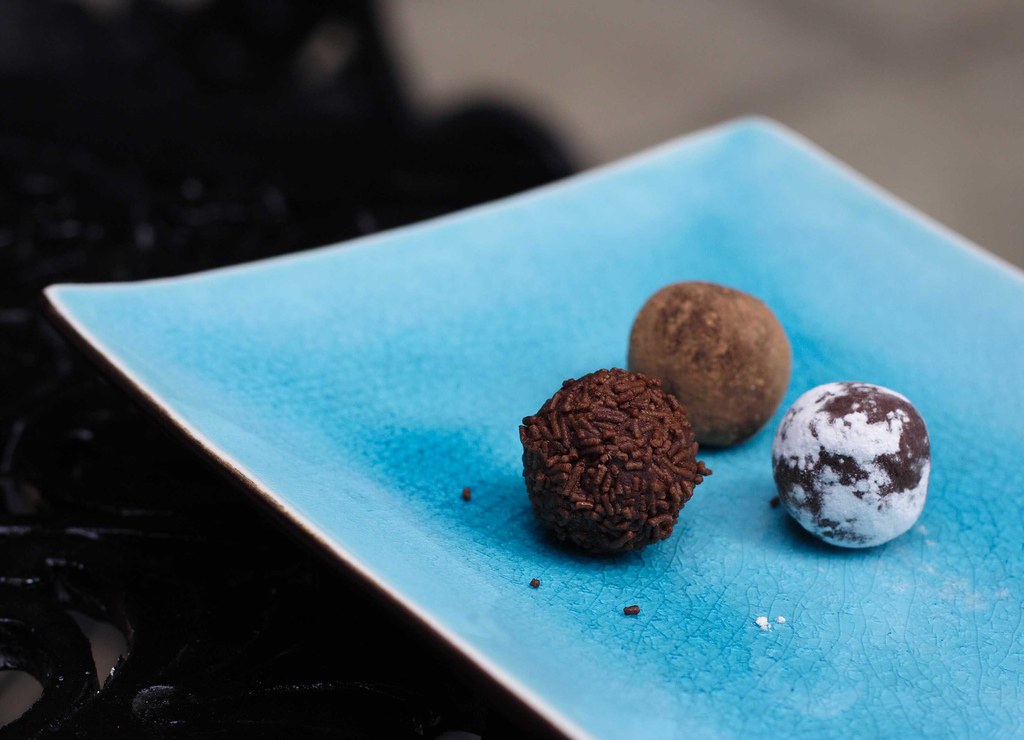
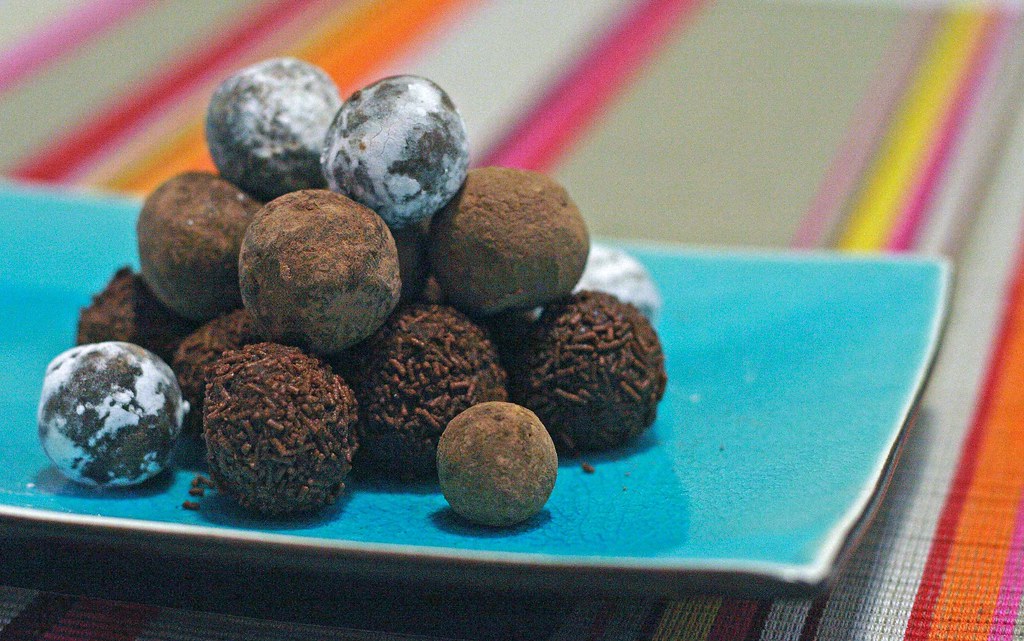
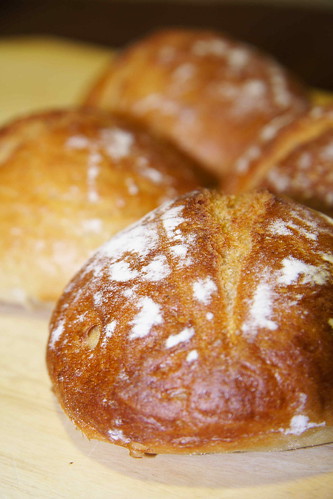
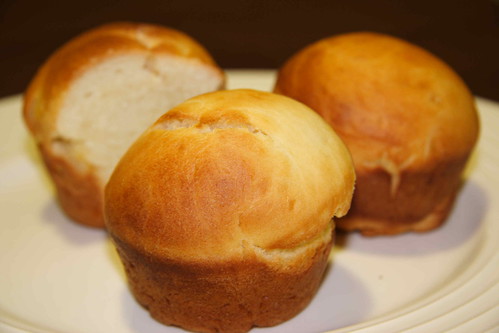
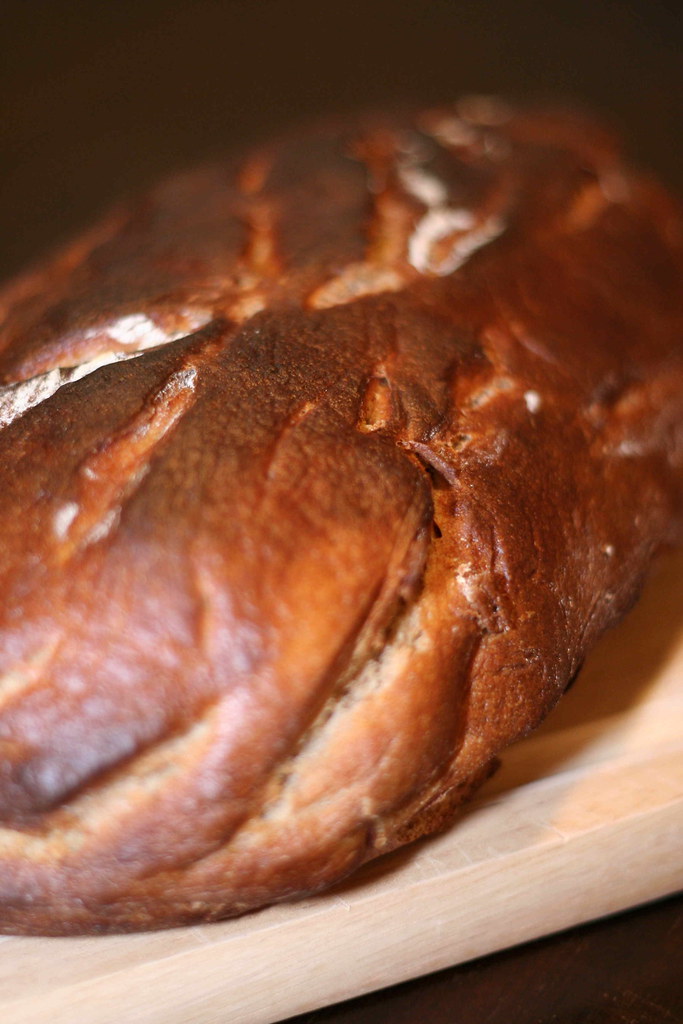
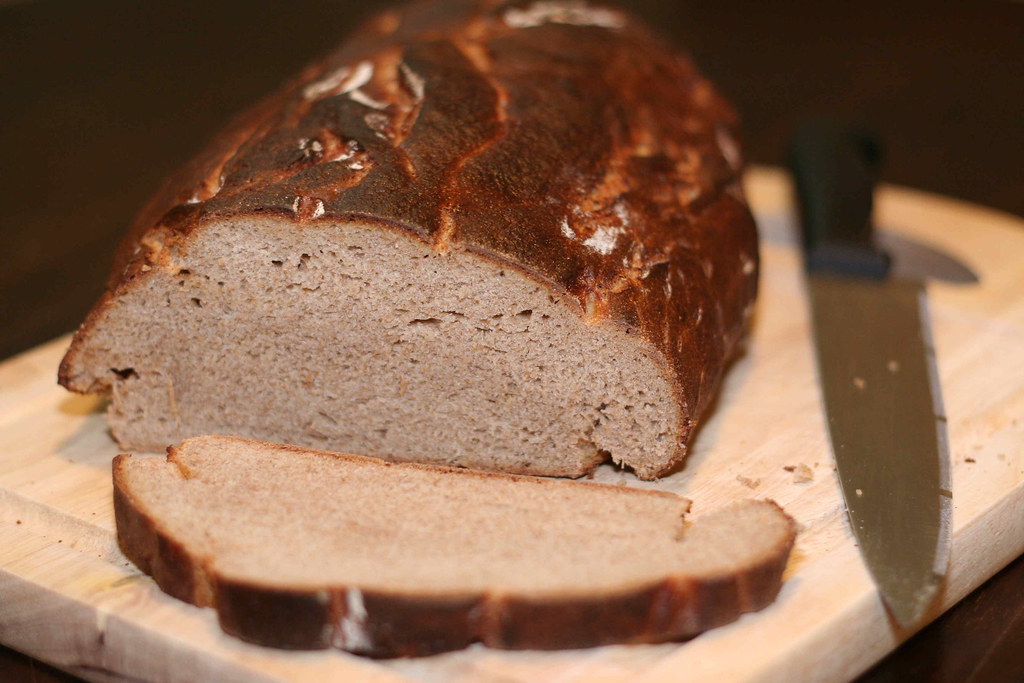
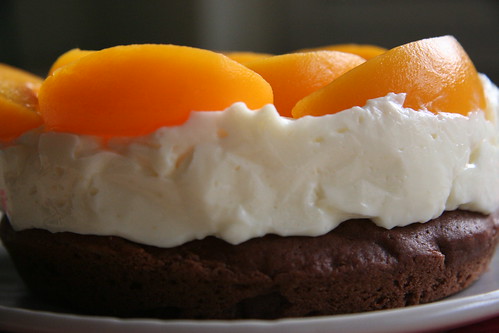
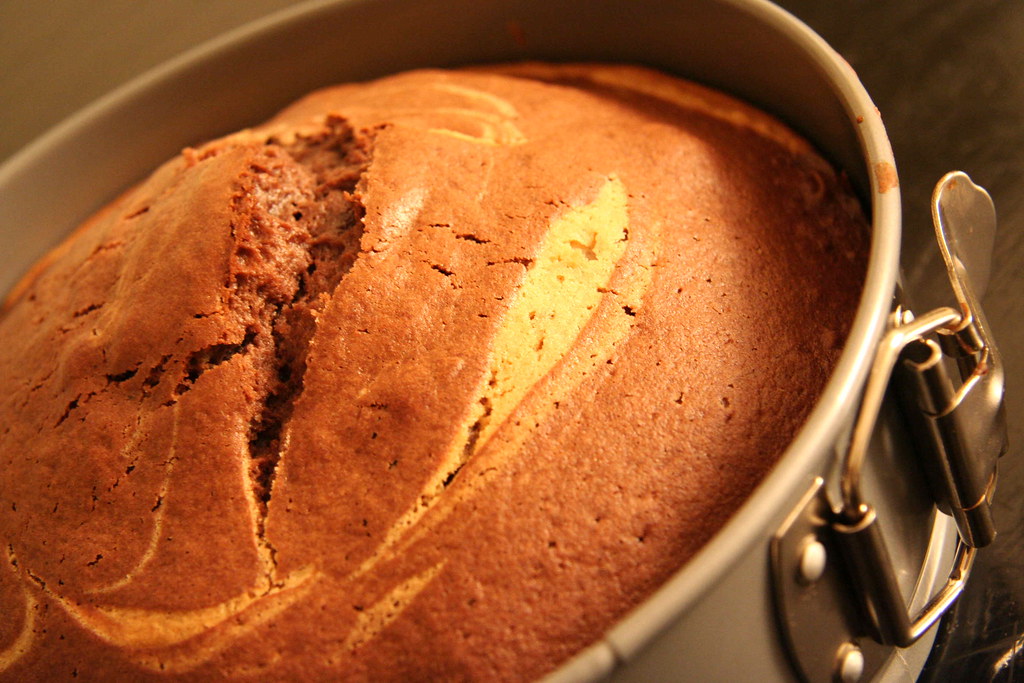

ALL WRITTEN CONTENT AND PHOTOGRAPHY IS © 2006-2009 EVA SCHATZ
UNLESS OTHERWISE INDICATED. ALL RIGHTS RESERVED.